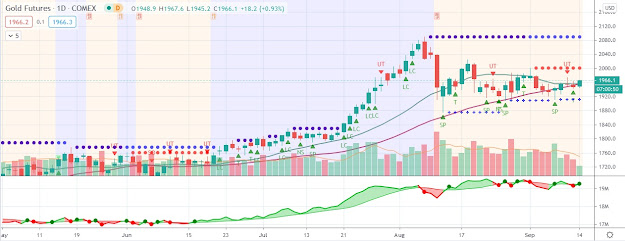Gold prices have risen on the back of the prospects for further economic weakness in the second half of 2011
 The gold price surged closing this week ahead of the release of the monthly jobs report and rallied further on the weaker than expected data. The price of gold climbed $56.12 to $1,882.30 per ounce after the Labor Department reported that zero nonfarm payrolls were created in August versus expectations of 68,000, according to a Bloomberg survey of economists. This was the weakest jobs data since September 2010. Furthermore, July’s payroll figures were revised downward. The unemployment rate was unchanged at 9.1% in August.
The gold price surged closing this week ahead of the release of the monthly jobs report and rallied further on the weaker than expected data. The price of gold climbed $56.12 to $1,882.30 per ounce after the Labor Department reported that zero nonfarm payrolls were created in August versus expectations of 68,000, according to a Bloomberg survey of economists. This was the weakest jobs data since September 2010. Furthermore, July’s payroll figures were revised downward. The unemployment rate was unchanged at 9.1% in August.Gold prices have risen on the back of the prospects for further economic weakness in the second half of 2011 and into 2012. Furthermore, the Federal Reserve’s recent pledge to hold the Fed funds rate near zero until mid-2013 has fostered an even more favorable environment for the price of gold. Until a more consistent set of encouraging economic data emerges, the gold price is likely to remain well supported.
Robin Bhar, senior metals analyst with Credit Agricole, echoed these sentiments in a note to clients this week. “When real interest rates are negative like in the (United) States for the foreseeable future, that’s going to be a huge boost to gold,” Bhar wrote. “The opportunity cost, among other factors, is negligible…Nothing has really changed in terms of the appetite (among investors) for diversifying into and holding gold as a form of insurance.”
Bhar went on to say that “Economic and financial developments should be the main drivers of the gold price for the rest of 2011.” Specifically, the Credit Agricole analyst pointed to rising debt burdens in the U.S. and euro zone, ongoing currency debasement, and deflationary risks, among other items.



Comments
Post a Comment